Symbols were important to the Vikings. For the Vikings, the runes were more than just an alphabet. They believed that runes could not only describe the world as a written script, but, when used correctly, could also shape the world. This is why the Norns, the Norse Fates, wrote the destiny of men by inscribing runes onto Yggdrasil, the Tree of Life.
For the Vikings, the runes were an important part of Seidr magic, which often involved the use of runic symbols.
What does the helm of awe mean ?
The helm of awe mean a lot for vikings. One of the most potent magical runic symbols used by the Vikings was Aegishjalmr, also known as the Helm of Awe, which gave Viking warriors protection, and also courage and strength.
Norse Magic and the Runes
According to Norse mythology, the runes were not created. Rather, Odin learned the secrets of the runes by hanging himself from Yggdrasil for nine days and nine nights while pierced by his own sword. At the end of this ordeal, the secrets of the runes were revealed to him, and he in turn shared those secrets with mankind.

Thanks to his knowledge of the runes, Odin himself was an expert in Seidr magic, which involved both discerning and changing the courts of fate by pulling in the strings of what has already been written.
Viking men and women could also use the runes to affect the course of fate. For example, in the Saga of Egil, the eponymous hero stays with a farmer whose daughter is very ill. In order to help the farmer, he investigates, and he finds a crudely carved rune in the girl’s bed.
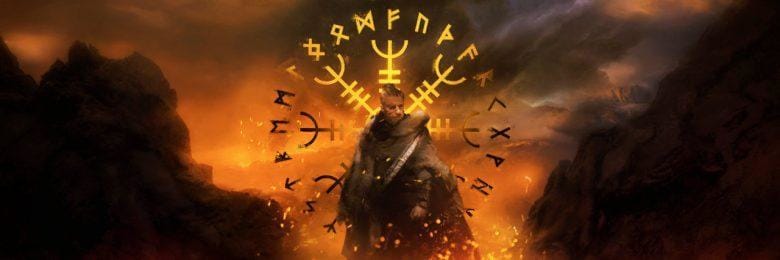
It seems that a local boy, trying to help the girl, has placed the rune there. But he formed the rune badly and it is doing more harm than good. Egil, as a master of the runes, erases the dangerous rune and replaces it with a new rune that will undo the ill effects.
Aegishjalmr
Aegishjalmr, or the Helm of Awe, is one of several runic symbols that we know about from 17th century Icelandic grimoires that preserve some of the earlier Viking magical practices.
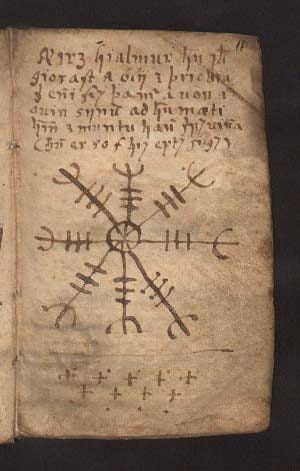
The symbol was designed to protect warriors in battle, and also give them courage and strength, assuring their victory against their enemies. The symbol could also be used to give a person the fortitude to overcome their own fears.
According to the manuscript, Viking warriors would draw the symbol on their forehead, between their eyes, before going into battle. Sometimes in blood. There it would interact with the pineal gland as the centre point of the Viking soul.

According to Icelandic folktales collected by Jón Ármason in the 19th century, the symbol could also be made from lead and pressed into the space between the eyebrows. The user would then recite the formula:
Aegishjalmr er eg ber milli bruna mer!
I bear the helm of awe between my brows!
The name of the runic symbol derives from Aegis, the giant that ruled over the sea. He was not a benevolent being. He was often covetous and would smash ships in order to take their treasure for himself. He was also skilled in the art of magic. The connection between Aegis and this symbol are unclear. Perhaps it was the idea that the sea is an unstoppable force.
Runic Composition
The Aegishjalmr runic symbol is not depicted identically in all the surviving sources. For example, in Galdrabok, a 17th century Icelandic grimoire, it is depicted with only four arms, while in the 19th century folktales, it appears with eight arms.

Either way, the arms project out from a central point, and terminate with Algiz, the Z-rune. In some cases, each runic stave also bears three lines running perpendicular to the runes themselves, but these are not always present.
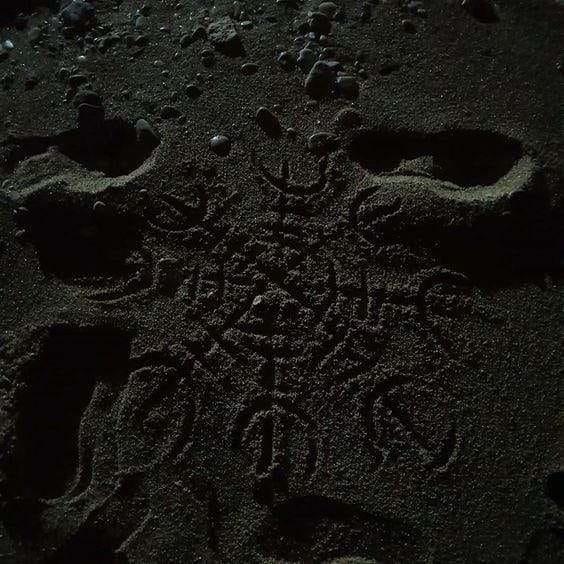
The Algiz rune was associated with protection and prevailing against one’s challenges, which made it the perfect rune to form the core of Aegishjalmr. It reoccurs regularly in several runic symbols known from the Icelandic grimoires including:
· Ad Unni – used by men to gain the love of a woman;
· Brynslustafir – commonly inscribed on whetstones;
· Draumstafir – calls down dreams of unfulfilled desires;
· Gapaldur – to ensure success in Icelandic wrestling bouts;
· Veidistafur – for luck in fishing.
Fafnir and the Helm of Awe
The most famous user of the Helm of Awe was Fafnir. He was a dwarf, son of King Hreidmar. He, and all his family members, were sorcerers that also had the power to shapeshift. Fafnir’s father was incredibly wealthy, and Fafnir, as the strongest of the kings three sons, was responsible for guarding the treasure.

It was said that among the treasure was an object called the Helm of Awe, which Fafnir would wear to enhance his already great strength in his role as guard. Scholars believe that this object was a physical helm that the dwarf donned.
The helm was probably magically enhanced, likely using the Aegishjalmr symbol, to give the wearer additional strength. Considering the dwarves were a family of sorcerers, perhaps it is no great surprise that they would possess such an enchanted item.
The helm eventually falls into the possession of the hero Siegfried (also known as Sigurd). A series of unfortunate events leads Loki to give the dwarf king a cursed ring that leaves people with an uncontrollable desire to possess the ring, but also curses the possessor of the ring to a tragic ending.

Fafnir and his brother Regin kill their own father in order to possess the ring. The two brothers then fight between themselves to be the owner of the object. Fafnir turns himself into a hideous dragon in order to scare his brother Regin away and guard his treasure.
Regin eventually convinces Siegfried to kill Fafnir in order to gain the ring. But Siegfried learns that Regin, in turn, intends to kill him, and so kills both of the dwarf brothers. The ring, and the other treasures of Fafnir, including the Helm of Awe, then become the property of Siegfried. Nothing more is heard of the enchanted helmet after that.
Aegishjalmr and Asatru
The Helm of Awe is a popular symbol among followers of Asatru, modern followers of the old Norse faith. It invokes the protection of the Norse gods, and therefore symbolizes alignment to the old Viking religion.
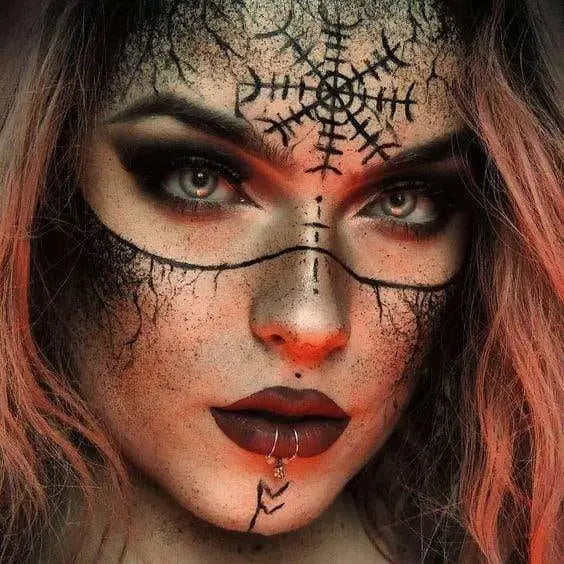
It also imbues the wearer with courage and the fortitude to face their fears, which are considered important qualities of followers of Arastu. Therefore, Aegishjalmr is considered the perfect symbol for the religion.
Exploring the Symbolism of the Viking Axe and Other Norse Symbols
The Viking axe, a formidable weapon wielded by the fearless Norse warriors, is not just a tool of destruction but also a symbol of strength, power, and resilience in Norse mythology and culture.
We will delve into the rich symbolism surrounding the Viking axe and explore other significant Norse symbols that have shaped the mythology and culture of the Norse people, including the Triple Horn of Odin, the Magic Spear, the World Tree, the Web of Wyrd, the Norse symbol, and the legendary eight-legged horses.
Join us on this journey through the realms of Norse mythology and discover the hidden meanings behind these iconic symbols.
- Viking Axe - Symbol of Strength: The Viking axe, known for its craftsmanship and deadly effectiveness in battle, was a symbol of strength and courage for the Norse warriors. It represented their unyielding determination and readiness to face any challenge or adversity.
- Triple Horn of Odin: The Triple Horn of Odin, also known as the Horn Triskelion, is a symbol associated with Odin, the chief god of Norse mythology. It represents Odin's wisdom, poetic inspiration, and his pursuit of knowledge. It is often seen as a symbol of spiritual growth and enlightenment.
- Magic Spear: The Magic Spear, known as Gungnir, was wielded by Odin himself. It symbolises power, precision, and the ability to pierce through obstacles. It is said to never miss its mark, embodying the idea of unwavering determination.
- Symbolism in Norse Mythology: Norse mythology is replete with symbolism, where gods, creatures, and objects hold deep meanings. The tales of gods like Thor, Odin, and Loki, and their adventures, are rich with symbolic elements that reflect human nature, the cosmos, and the eternal struggle between order and chaos.
- Norse Culture: The Viking axe and other symbols mentioned here played a crucial role in Norse culture. They were not only a part of daily life but also carried spiritual significance. Understanding these symbols helps us gain insights into the values and beliefs of the Norse people.
- World Tree - Yggdrasil: Yggdrasil, the World Tree, stands at the centre of Norse cosmology. It connects the nine realms of the Norse universe and symbolises the interconnectedness of all life. Its branches reach into the heavens, its roots into the underworld, and its trunk into the mortal realm, representing the cosmic order.
- Web of Wyrd: The Web of Wyrd, also known as the Skuld's Net, represents the interconnectedness of past, present, and future. It is the weaving of fate and destiny, where the actions of individuals and the gods shape the course of the world.
- Norse Symbol: The Norse symbol, with its intricate and interwoven patterns, is a visual representation of the complexity and depth of Norse culture. It can be found on artefacts, jewellery, and architecture, serving as a reminder of the enduring legacy of the Vikings.
- Eight-Legged Horses: The eight-legged horses, Sleipnir, ridden by Odin, are a unique and mythical symbol of speed and transcendence. They represent the ability to move between realms and worlds, symbolising Odin's wisdom and power.
- Tree of Life: In Norse mythology, the Tree of Life is a powerful symbol of growth, regeneration, and the cycles of nature. It reminds us of the eternal nature of life and death and the ever-turning wheel of time.
The Viking axe and these Norse symbols are not just relics of a bygone era; they continue to inspire and captivate us today. They serve as a reminder of the enduring strength, wisdom, and complexity of Norse mythology and culture.
Whether you're interested in history, mythology, or simply the beauty of symbolism, these elements from the Norse world offer a fascinating journey through the heart of the Viking spirit.
Enjoyed the read? See some more of our great content at odinscave.com

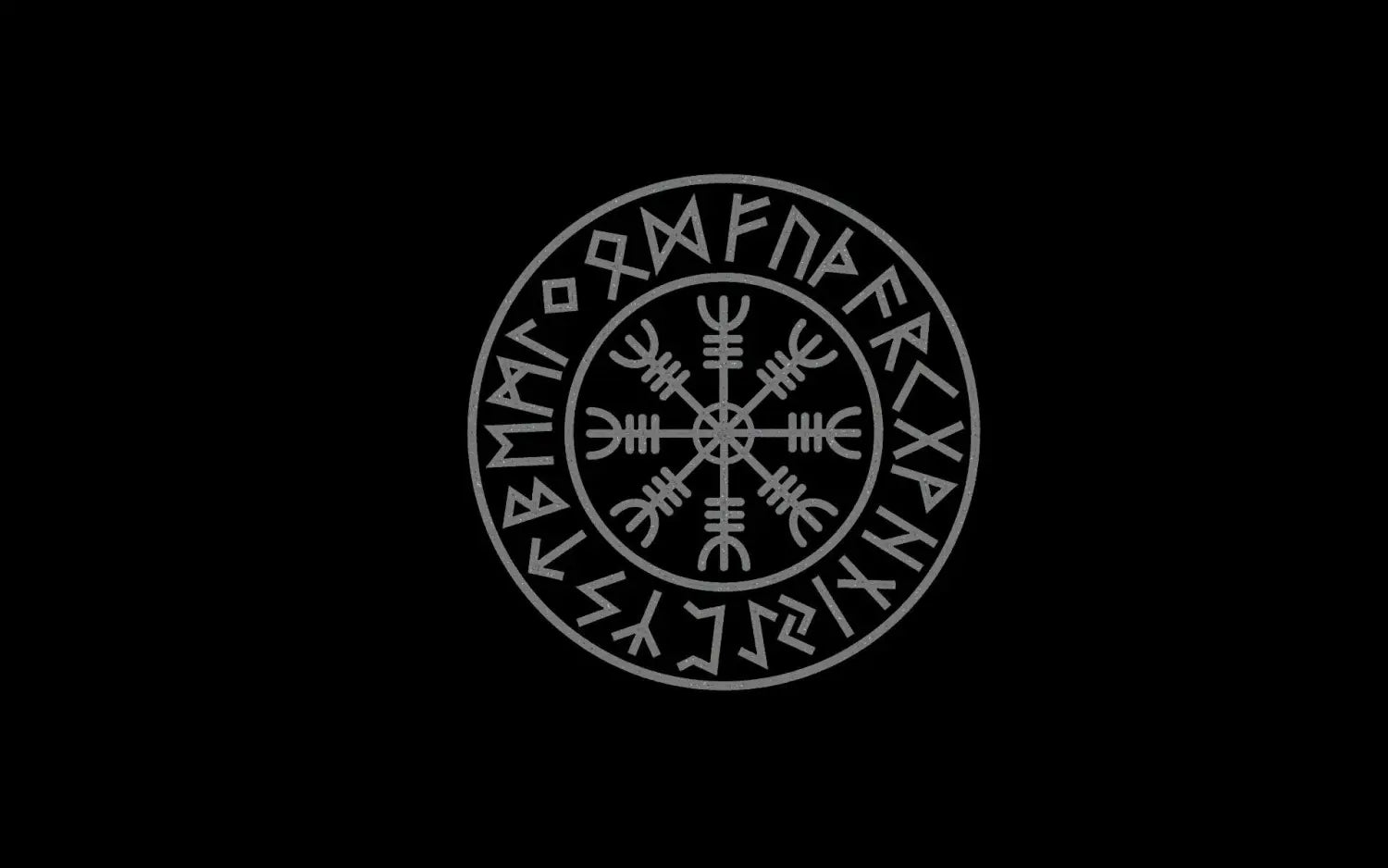
Share:
Mjolnir, Thor's Hammer, The Hammer of the God of Thunder
Vegvisir | Viking Compass